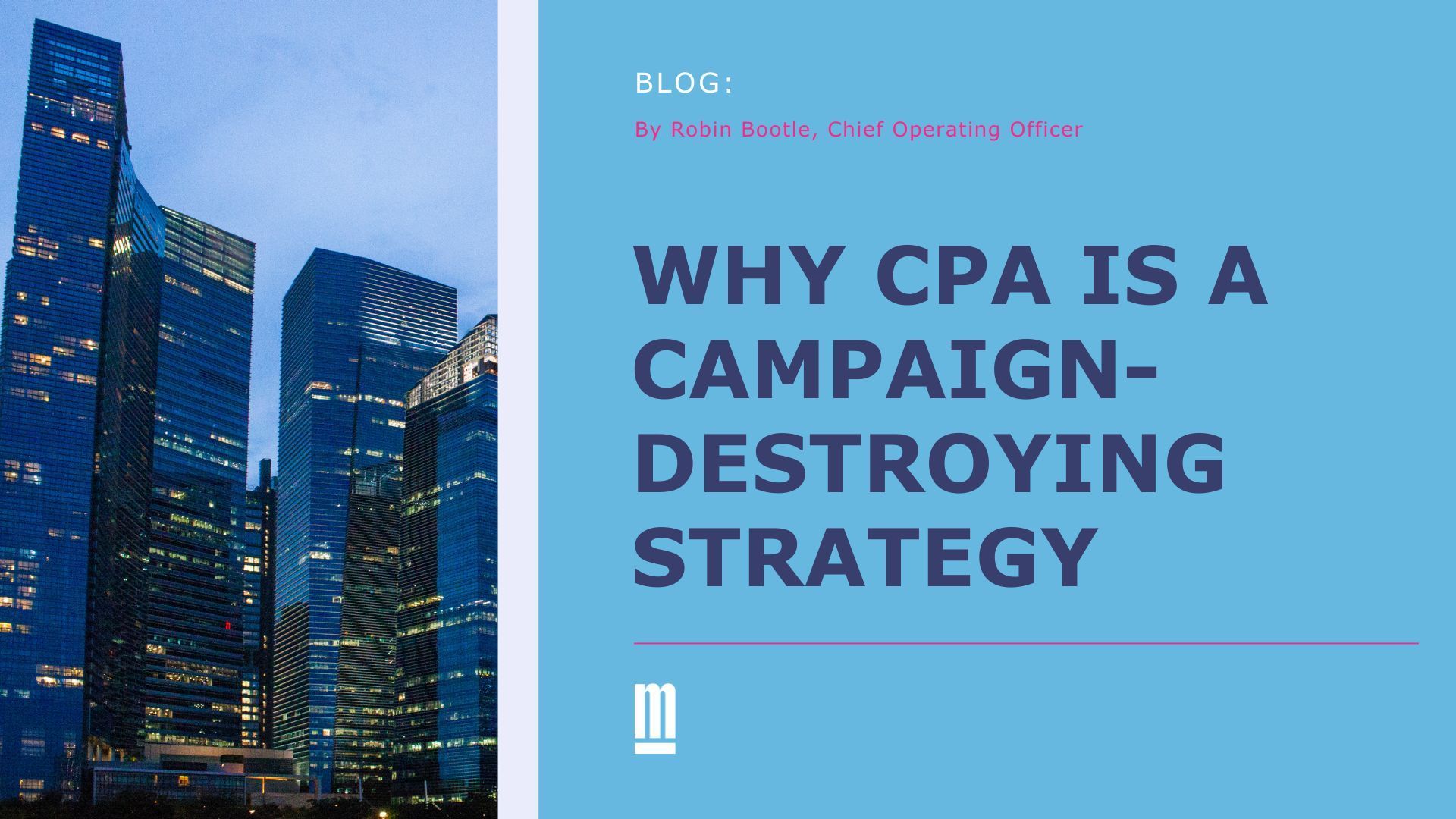Why CPA is a campaign-destroying strategy
By Robin Bootle, Chief Operating Officer

Given that cookies only enable targeting and measurement against a minority of users - and with that number soon to plummet still further - should buyers be weaning themselves off the supposedly all-accountable metric of CPA?
Having spoken to many buyers of CPA, it seems like a lot of people still don’t have a plan for doing so.
This is all the more strange because, in practice, CPA has always been a questionable metric for measuring performance. When I joined the industry 20 years ago, tech platforms were trying to push attribution models that placed additional value on upper-funnel views and engagements, rather than allowing last-click (Google Search) to claim all the credit. Needless to say, these never got much adoption, aside from Google’s own mark-your-own-homework system, which even today gives Google credit for the last click and thus the majority of CPA.
Many buyers do recognise this, and allow for higher CPAs off Google Search, but therein lies another problem with CPA.
CPA doesn’t provide enough data points to optimise effectively
The issue for those who allow for higher CPA targets on higher-funnel performance activity is that there simply isn’t sufficient data against which to optimise; last click has attributed the conversions to lower-funnel activity claims.
To optimise against placements or users, you need a significant amount of data points to know that websites A-M are notably better at delivering performance than websites N-Z. If you don’t have that data, you’re either wasting your money on websites that don’t work or limiting your potential to the few places where you know you can find converting users.
For example, if your CPA is $100, even with a budget of $100k you only get 1,000 data points (conversions) against which to optimise - and that’s if you hit your target. It’s not enough when spread across 1,000 or even just 100 websites...
An easy way around this is to optimise to upper-funnel activity, such as homepage or product page visits, but when I've mentioned this to CPA buyers it seems uninteresting or too hard to arrange. Nonetheless, this would provide tons more data with which to optimise.
The cookie-pool is shrinking, and ID models are nowhere close
Now to address the elephant in the room: marketers who insist on CPA are measuring their media plan against just 30% of their users. And, by the way, when you add in the fact that the half-life of a cookie is around 14 days, that 30% quickly gets smaller.
CPA buyers can be split into two groups: the first leaves it there, satisfied that reaching only 30% of their potential user base is enough. The second group uses models to assume that users who don’t allow cookies also behave in the same way as cookie-enabled users, and therefore employ similar tactics for both cookied and non-cookied users.
But isn’t there something inherently wrong in that assumption? Aren’t users who block cookies or choose Apple over PC exhibiting fundamentally different behaviours?
And then what happens when cookies head into the sunset on Chrome and those same buyers are forced to use an ID solution which only has 1-5% coverage? Can you really use a 5% sample of the population to make assumptions about the remaining 95%?
CPA places the blame on the traders and suppliers
The other problem with CPA - the notion of driving a user to purchase or sign up - is that once the campaign begins, it is solely the responsibility of the trading team to hit that CPA - despite the fact that the website journey may need optimising, or the product or pricing may be a barrier to sale.
Surely there are alternatives
So, CPA was never a good metric, and now it's running out of places to hide, but how many CPA buyers have a compelling post-cookie plan? And what are the essential requirements?
As a marketer, you want something that doesn't make huge assumptions about your users.
Something that spans non-consented and consented users.
Something that spans browsers, apps and devices.
Something that has enough data points to allow meaningful optimisation.
Something that doesn’t blame the CPA trader for a poor product but forces a useful conversation between traders and marketing teams.
Wouldn’t Clicks + Viewability and/or Attention + Bounce Rate give you all the information you need about your ad campaign? Maybe we can even give it a name - Validated Interest Clicks (VICs).
Clicks on their own aren’t a trustworthy metric, but it's easy enough to get a measure of whether it's an accidental click by evaluating if the user saw the ad and if they stayed on your page for a reasonable amount of time.
To get a high VIC rate is the job of the media buyer - get people to the website, and make sure they’re interested enough to at least glance through the landing page.
And then once the trader has successfully delivered interested users to the brand’s website, it’s the brand’s responsibility to convert that user. If you have interested users on your website but no one’s buying, you have a website or product issue.
This solution also allows for users to have a nosey around the site, leave, and come back later via a quick search on their browser to convert, but without having high CPA targets that don’t provide the data sufficiency with which to optimise.
I've been knocking these ideas around for a while and the only person who rebuffed them was paid to sell CPA-related technology that didn't solve any of these problems. But I'm really keen to hear what's out there and how people are solving these problems, so get in touch and let's chew the fat.

